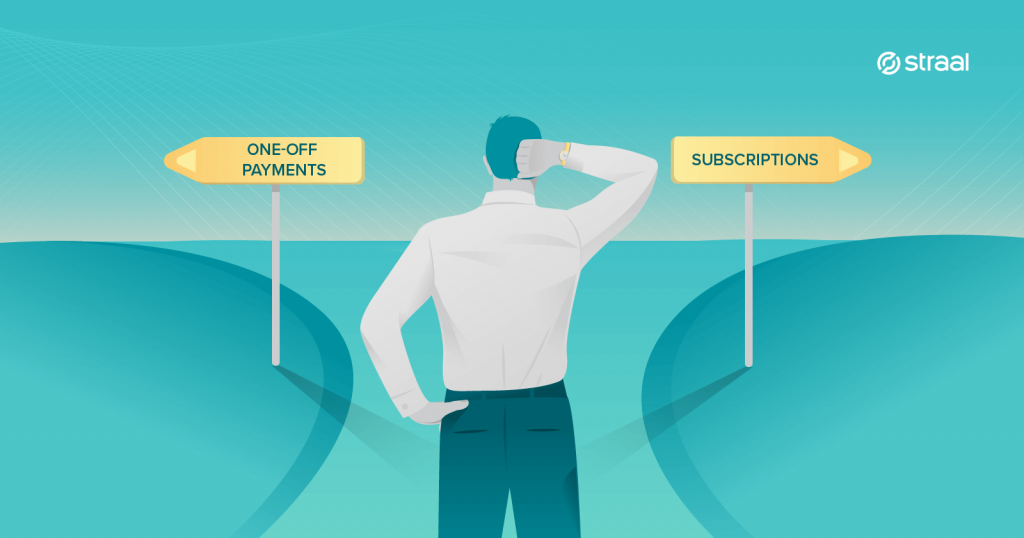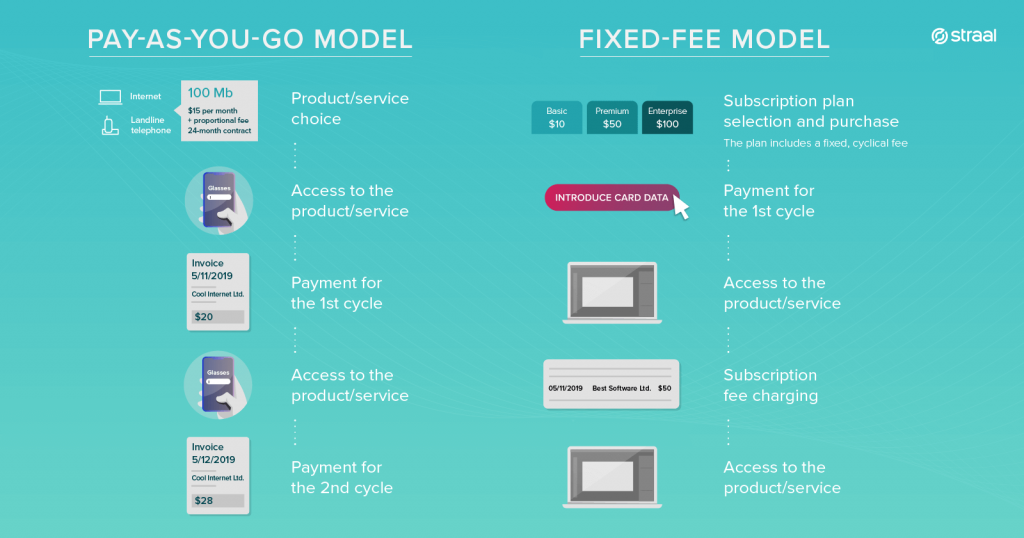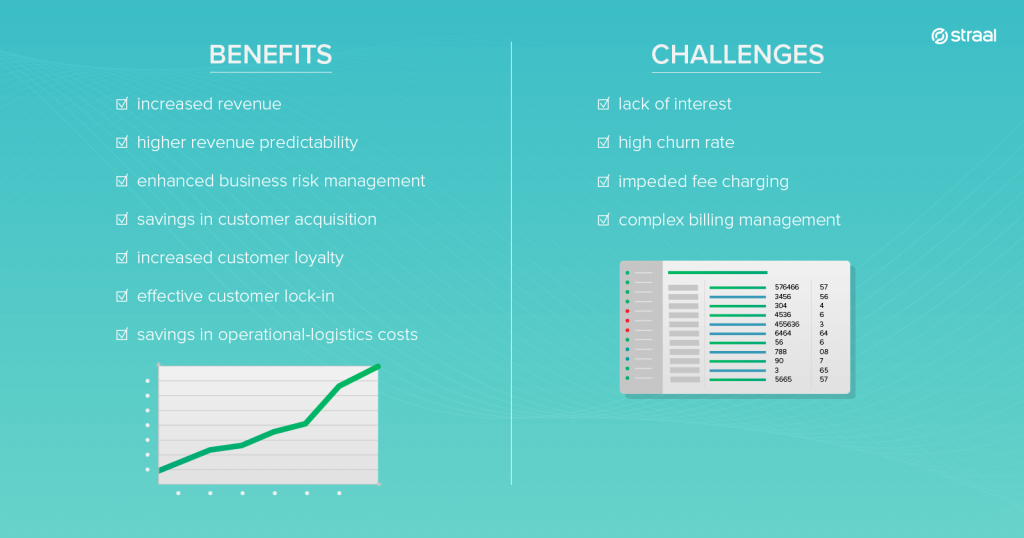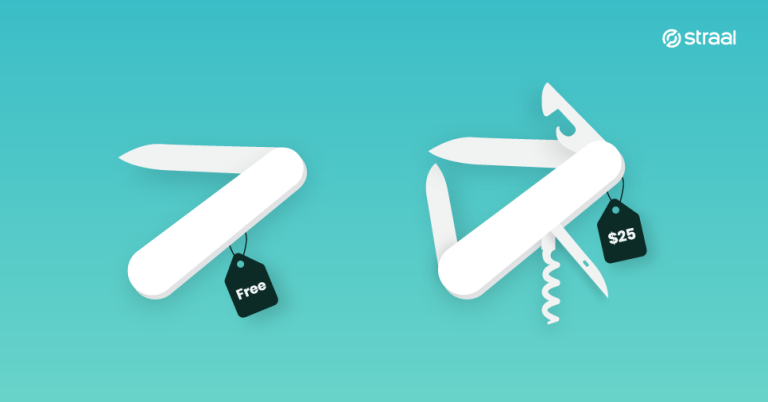You may have heard about the ongoing subscription boom. Every month, more and more subscription-based companies enter the market. Some of them change the rules of the game while other disappear in no time. Go through this entry to learn how to join the former: embrace the subscription business model with all of its pros and cons, and translate this knowledge into profitable decisions!

The world has gone crazy about subscription services. In the era of Subscription Economy, we begin our days reading news on a subscribed online platform, commute to work with music streamed right into our ears, and exercise at the gym in our spare time thanks to fitness club memberships. Figures confirm that the subscription market is booming: McKinsey & Company reports that for the past five years, it has been growing at an astounding pace of 100% YoY! I’m sure each of us could identify successful implementations of the subscription model effortlessly. Netflix, Adobe, Amazon Prime, Dollar Shave Club… You name it.
Numerous success stories prove that switching from the pay per product model into the one based on recurring billing results in increased profitability, predictability, and stability. These unquestionable business benefits are the reason why new subscription-based businesses are being introduced to the markets of nearly all industries every week, as Gartner reports.
Subscription Economy – a relatively new socio-economic phenomenon – is developing and it is expected to continue changing consumer behaviour across continents in the future. Therefore, the subscription model is (and most likely will be) a lucrative business opportunity for business owners from virtually all industries. You may think it doesn’t suit yours but as you’ll learn later on, it’s a matter of proper business modelling and product/service design.
What Is Subscription Business Model?
There are multiple types of the subscription model but its basic version can be described as a recurring, cyclical (not necessarily regular) exchange of goods or services. As it is implemented by business owners in many ways, we shall rather talk about subscription-based models, not just one model.
There are two major types of subscription models:
- fixed-fee models in which consumers pay a fixed fee in advance and only after the payment is made, they get or maintain access to the product or service,
- pay-as-you-go models in which consumers pay a subscription fee reflecting the actual usage of the service or product after a predefined time.
The difference between an “ordinary” and a subscription business model lies in the payment process: when subscribing, your customers pay for your product or service in a recurring manner instead of terminating the deal after one payment. For you, as a business owner, it comes down to the difference between recurring billing and one-off charging. It’s worth remembering that subscriptions are not instalment payments because every subscription fee is charged for a new product (e.g. subscription box for a new month) or another access to a service (e.g. video streaming or fitness classes).

Popular Implementations of the Subscription Model
What’s interesting about the subscription business model is that it can be implemented in a broad range of industries. Subscription-based services launched nowadays prove that when tailored properly, the model functions really well on many markets. It’s one of the reasons behind the emergence of the Subscription Economy as a global economic phenomenon.
The subscription business model is associated mainly with digital products but, in fact, you can use it for both tangible and intangible goods. What matters in this context is product design as not all of them are suitable for subscriptions.
When it comes to the most popular implementations of the subscription model, right now, businesses offer mostly:
- Access to Content Platforms
This subscription-based service is probably the one that came to your mind when you read the headline. No wonder: content platforms offered in these models are extremely popular. In the US only, between 2017 and 2018, revenue generated by music streaming (Apple Music, Spotify, etc.) increased from $5.7 bn to $7.4 bn!
Music isn’t the only content type offered in this model. Other examples include video (Netflix, Hulu), news (Financial Times, The New Yorker), video games (PlayStation Now, Xbox Game Pass) or ebooks and audiobooks (Scribd, Kindle Unlimited).
- B2B SaaS Products
SaaS is yet another highly popular implementation of the subscription model. Cloud software products are consequently replacing the boxed ones, especially in the business-to-business world. According to research conducted by BetterCloud, 73% of companies claim that by 2020, nearly all of their business apps will be SaaS!
Sample categories of B2B SaaS include office suites (Microsoft Office Business, G Suite), internal communication (Slack, Skype for Business), marketing (GetResponse, Buffer), software development (GitHub, Mendix) or sales (Salesforce, Zoho).
- Curated Subscription Boxes
Businesses making use of the subscription model this way offer physical products delivered right to the customer’s door on predefined dates (typically, once a month or quarter). Before the delivery, the client doesn’t know what exactly their box will contain: what they find inside is either a set of product samples (e.g. small portions of cosmetics from a new product line) or complete products in small amounts (e.g. clothing such as T-shirts or shirts).
The most popular subscription boxes with cosmetics are delivered by Ipsy and BirchBox while clothing is offered by companies such as Wohven or Basic Man (it may be accompanied by accessories and shoes, as in the case of Trunk Club or Thread & Flourish). Surprise subscription boxes may also include books (Book of the Month, Once Upon a Book Club), cooking recipes and ingredients (Blue Apron, HelloFresh) or even alcoholic beverages (Craft Beer Club, Winc).
- Replenishment Physical Products
This implementation of the subscription business model takes advantage of the fact that consumers need to refill certain physical products or replace used parts with new ones. It has been successfully used over the years by Dollar Shave Club (one of the best-known subscription companies in the world) selling shaving products for men. According to McKinsey, this type of subscription services accounts for approx. ⅓ of the whole e-commerce subscriptions market.
Besides cosmetics, this kind of the subscription model may be used for distribution of other hygiene products (Honest, Monthly & Co), pet food (Pet Plate, The Farmer’s Dog), drinks such as water (Nestlé Pure Life, Costco).
Pros and Cons of the Subscription Model
Some of the main reasons behind the popularity of the subscription business model are the undeniable benefits it brings for business. These are easy to measure (jump here to learn how to track and optimize subscription metrics) and translate into both savings on sales, marketing and logistics as well as higher overall revenue.
The greatest advantages of the subscription business model include:
- increased revenue thanks to better adjustment of pricing to customer income,
- higher revenue predictability facilitating operational planning,
- enhanced business risk management reducing the uncertainty,
- savings in customer acquisition spendings allowing investing in retention,
- increased customer loyalty prolonging their lifecycle,
- effective customer lock-in making clients stay with you for longer,
- savings in operational-logistics costs due to predictable demand.
Just like any business model, the subscription-based ones have some disadvantages, too. However, those should be perceived rather as challenges to be met by business owners as they can be eliminated through proper management.
When operating in a subscription business model, you may be challenged by:
- lack of interest in your subscription offer when your product design makes it unsuitable for the model or better one-off options are available,
- high churn rate when your customers don’t see enough value in your service over time,
- issues with charging subscription fees when your customers’ payment data is not up-to-date (e.g. when their credit card expire),
- complicated billing management when you offer a variety of subscription plans or charge fees on several days of the cycle.

Payment Solution and Your Subscription Business
The last two cons I mentioned are related to subscription payments. You can enjoy the subscription business model benefits only if you choose a payment solution tailored to your needs and the model-specific requirements. Subscription-based models work only when subscription fees are collected effectively. For example, if half of your customers’ payment data were not valid and you couldn’t charge them, you wouldn’t enjoy the increase in overall revenue or its predictability.
In fact, there are payment gateways specialized in subscription-based businesses. Michał Jędraszak explains what features this kind of payment gateways have and why those really matte what features they have and why those really matter. If you look for additional information, also check out the entries by Tomasz Kobylarz on card payments optimization and subscription management software.
Design Your Subscription Business Model Today!
There are countless subscription business opportunities ahead so hurry up and take advantage of them before the market gets saturated.
Want to learn more about the subscription market? Download Straal’s Subscription Business Handbook.







